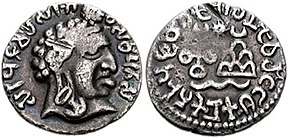Telugu language
| Telugu | |
|---|---|
| తెలుగు | |
 | |
| Pronunciation | [teluɡu] |
| Native to | India |
| Region | Andhra Pradesh Telangana |
| Ethnicity | Telugu |
Native speakers | 83 million (2011)[1][2] L2 speakers: 11 million[1] |
Dravidian
| |
Early form | Old Telugu
|
| Dialects |
|
| Telugu alphabet Telugu Braille | |
| Signed Telugu | |
| Official status | |
Official language in |
|
Recognised minority language in | |
| Language codes | |
| ISO 639-1 | te |
| ISO 639-2 | tel |
| ISO 639-3 | tel – inclusive codeIndividual code: wbq – Waddar (Vadari) |
tel | |
| Glottolog | telu1262 Teluguoldt1249 Old Telugu |
| Linguasphere | 49-DBA-aa |
 Telugu is native to Andhra Pradesh and Telangana | |
Telugu (/ˈtɛlʊɡuː/;[5] తెలుగు, Telugu pronunciation: [ˈteluɡu]) is a Dravidian language spoken by Telugu people predominantly living in the Indian states of Andhra Pradesh and Telangana, where it is also the official language.[6][7] Telugu is also an official language in West Bengal, Yanam district of Puducherry and a linguistic minority in the states of Odisha, Karnataka, Tamil Nadu, Kerala, Punjab, Chhattisgarh, Maharashtra and Andaman and Nicobar Islands. It is one among the six languages designated as a classical language of India in the country.[8][9] Telugu was also referred as Andhramu (ఆంధ్రము)[10]
Telugu ranks fourth among the languages with the highest number of native speakers in India, with nearly 82 million speakers as per the 2011 census,[11] and 15th in the Ethnologue list of languages by number of native speakers.[12][13] It is the most widely spoken member of the Dravidian language family[14] and one of the twenty-two scheduled languages of the Republic of India.[15] It is also the fastest-growing language in the United States, where there is a large Telugu-speaking community.[16] Roughly 10,000 pre-colonial inscriptions exist in the Telugu language.[17]
Etymology[]

Speakers of Telugu refer to it as simply Telugu or Telugoo.[18] Older forms of the name include Teluṅgu, Tenuṅgu and Teliṅga.[19] Atharvana Acharya in the 13th century wrote a grammar of Telugu, calling it the Trilinga Śabdānusāsana (or Trilinga Grammar).[20] Appa Kavi in the 17th century explicitly wrote that Telugu was derived from Trilinga. Scholar Charles P. Brown made a comment that it was a "strange notion" since the predecessors of Appa Kavi had no knowledge of such a derivation.[21]
George Abraham Grierson and other linguists doubt this derivation, holding rather that Telugu was the older term and Trilinga must be the later Sanskritisation of it.[22][23] If so the derivation itself must have been quite ancient because Triglyphum, Trilingum and Modogalingam are attested in ancient Greek sources, the last of which can be interpreted as a Telugu rendition of "Trilinga".[24]
Another view[whose?] holds that tenugu is derived from the proto-Dravidian word ten ("south")[25] to mean "the people who lived in the south/southern direction" (relative to Sanskrit and Prakrit-speaking peoples). The name Telugu, then, is a result of an "n" to "l" alternation established in Telugu.[26][27]
History[]
Obverse: Portrait of the king. Legend in Prakrit in the Brahmi script (starting at 12 o'clock):

